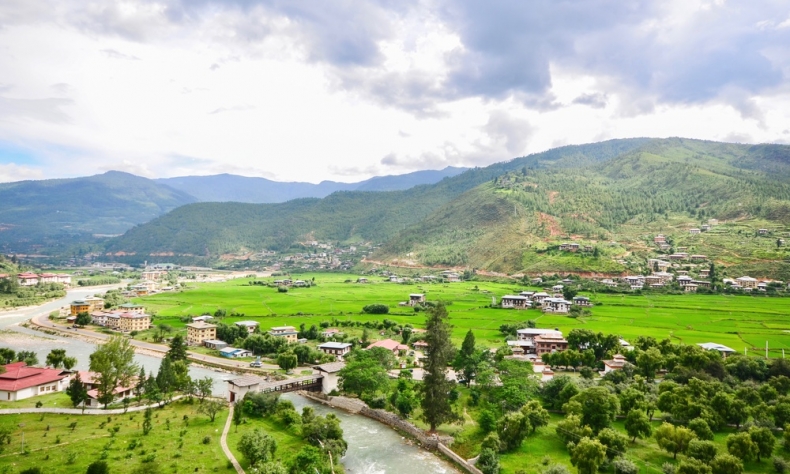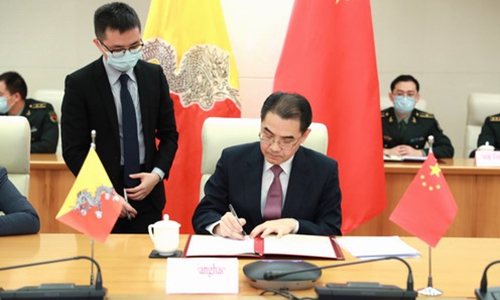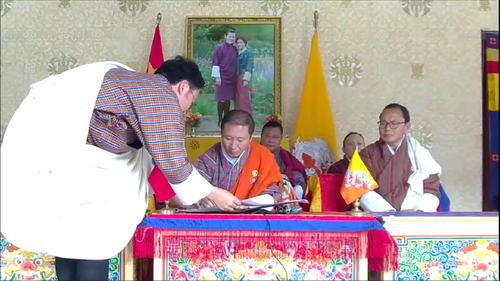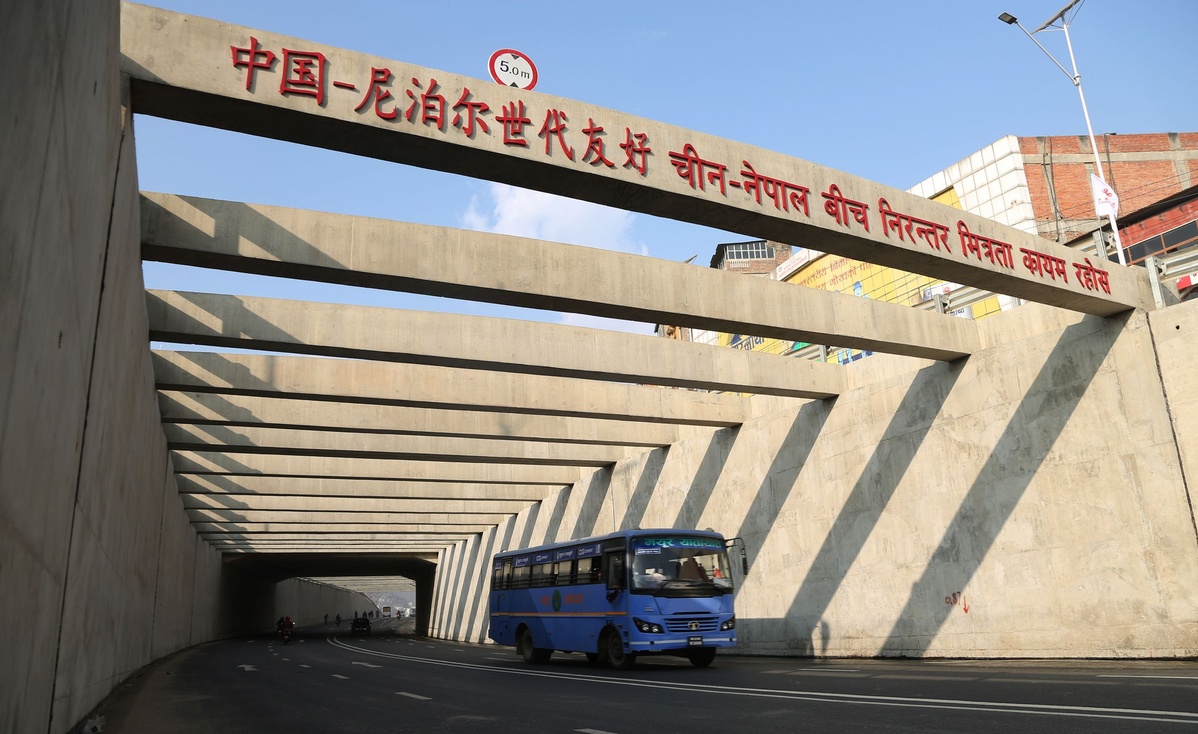China-Bhutan Border MoU: An Opportunity to Expand Bhutan’s Diplomacy and Developmental Spheres

The latest China-Bhutan Border MoU has sent very positive message on finding resolution of the border issues, and also provides a constructive signal to the entire Trans-Himalaya region.
With signing a Memorandum of Understanding (MoU) on a “Three-Step Roadmap for Expediting the Bhutan-China boundary”, the two countries have opened a new chapter on the course of resolving boundary issues and fostering dialogue for promoting cooperation. This new agreement has also given an indirect message to India that it should not interfere in the internal affairs of other sovereign states, and Bhutan is capable to talk and resolve issues with China. Regional experts sense very positive with this new agreement and praise China’s constructive neighbor policy to harness partnership at a time of uncertainty of Covid-19 pandemic and economic-social complications.
Assistant Minister of Foreign Affairs of China, Wu Jianghao and the Foreign Minister of Bhutan, Lyonpo Tandi Dorji signed the MoU and vowed to continue dialogue and also expand the cooperation for the benefits of both countries through a video meeting on October 14, 2021.
During the meeting, Wu said that China and Bhutan are friendly neighbors linked by mountains and rivers. He believes that the MoU signed today will make a meaningful contribution to speeding up the negotiation on boundary demarcation and promoting establishing diplomatic ties between the two countries.
“China will follow Xi Jinping Thought on Diplomacy, practice the philosophy of neighborhood diplomacy featuring amity, sincerity, mutual benefit and inclusiveness, and be a good neighbor, friend, and partner of Bhutan on the principles of equality, peaceful coexistence, and win-win results,” Wu said.

A very positive commitment to implementing the agreement is also made by Bhutan’s Ministry of Foreign Affairs. But one thing should be noted that Bhutan has no diplomatic relations with China though the two countries share over 400 km long border.
Since the Doklam standoff in 2017, China-India relations have been facing a critical situation on bilateral cooperation. India perceives China from a politically and ideologically biased standpoint, which always creates hurdles so that it can’t build trust and resolve the disputed issues peacefully. China advocates negotiations and a constructive approach to build trust and foster multiple cooperation between the two rising powers.
With an imaginary and imprecise fear of China, India has been dominating Bhutan’s political, foreign and defense affairs for decades. As per the spirit of the United Nations, this is a direct foreign interference in an independent nation. Due to India’s objection, Bhutan is unable to establish formal diplomatic relations with its immediate neighboring country China. Many regional analysts opined that one of the reasons behind the frozen ties between Bhutan and China is India’s geopolitical role and direct interferences on Bhutan’s internal affairs.
For this time, undoubtedly, India is not happy with the recent MoU on the Three-Step Roadmap Agreement between Bhutan and China though India has not made a harsh statement till now. India’s senior official of the Foreign Ministry just said that India has noted the signing of the agreement. As a sovereign state, Bhutan needs to make a decision by itself if it wants to resolve boundary issues with China and promote its diplomatic spheres beyond India’s circle.

The new MoU on the Three-Step Roadmap is certainly a milestone to address the boundary issues. There have been 24 rounds of boundary talks between China and Bhutan since 1984. In course of the border talks, the Joint Communiqué on the Guiding Principles for the Settlement of the Boundary 1988 and the Agreement on the Maintenance of Peace, Tranquility and Status Quo in the China-Bhutan Border Area 1998 were significant agreements to foster further discussions and opened the door for fruitful dialogue.
The general understanding at the arena of diplomatic circle is that Bhutan can’t take any foreign or defense related decision without consulting with India. As per this reality, some regional analysts opined that Bhutan had certainly informed India about the ongoing negotiation with China, but India could be unknown about the outcome of the talk. Indian media had given enough space for the China-Bhutan talk, but due to the lack of a proper official statement from the Indian government, these media attacked China unnecessarily. Some analysts say that Indian media are always very negative on neighbor issues. The counterproductive effect of it is that they are creating a negative image of India among the people of the neighboring countries.
According to the understanding of the Three-Step Roadmap, China and Bhutan will first establish basic political principles of boundary demarcation; second, they will solve specific disputes and finally, they will sign an agreement as per the understanding and draw the boundary demarcation.
But regional analysts said that it is very difficult to build consensus in Bhutan due to the pressure by India. India wants its favor on the agreement. It doesn’t want China to resolve boundary issues with Bhutan even though Bhutan would have more advantages. India’s neighbor diplomacy has utterly failed and it never learns to respect sovereignty and independence of the neighboring countries. Due to its malign behaviors to the neighboring countries, the Indian influence is at a lower point in South Asian region except Bhutan.

India tries to give a lot of pressure to Nepal to follow Bhutan model, but Nepal’s political parties and civil societies have directly rejected India’s malign approach, and it is said that the Narendra Modi government is reviewing its neighbor diplomacy after experiencing multiple aftershocks. There is no doubt that if India does not create hurdles on China-Bhutan future talk, Bhutan will take concrete steps to resolve the boundary issues with China. But analysts raise eyebrows about India’s possible mesh up on China-Bhutan talk.
China has a historical record of resolving boundary issues peacefully with neighbors. China and Nepal resolved their boundary issues in March 1960. After that, both have been enjoying a great level of partnership and cooperation on bilateral relations and also maintain complete peace and tranquility in the border areas. Since the establishment of the People’s Republic of China in 1949, China’s neighbor policies have been comparatively more benign, constructive, peaceful, and supportive than other powers in the world.
In conclusion, the latest China-Bhutan Border MoU has sent a very positive message on finding resolution of the border issues, and provides a constructive signal to the entire Trans-Himalaya region that China will continue its peaceful approach to cooperate and eager to expedite all necessary support and cooperation to every country of the entire region.
India shouldn’t create obstacles on China-Bhutan talk because it should understand that these two countries don’t want to disturb India, they want durable peace and cooperation not only between the two countries but also for the entire region.
Buddhi Prasad Sharma is an Associate Professor at Leshan Normal University and Senior Research Fellow at the Centre for Trans-Himalaya Studies, Leshan city, Sichuan Province, China.
 Facebook
Facebook
 Twitter
Twitter
 Linkedin
Linkedin
 Google +
Google +










